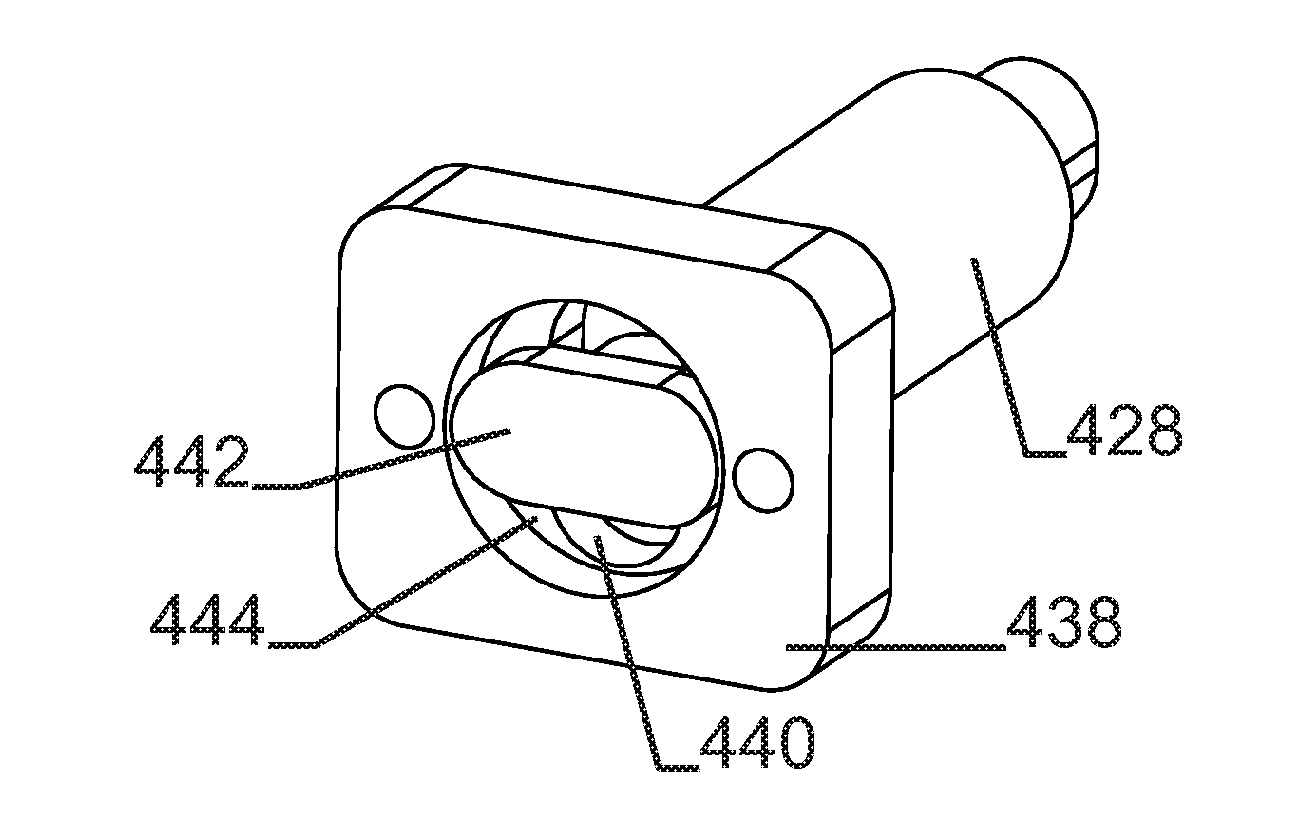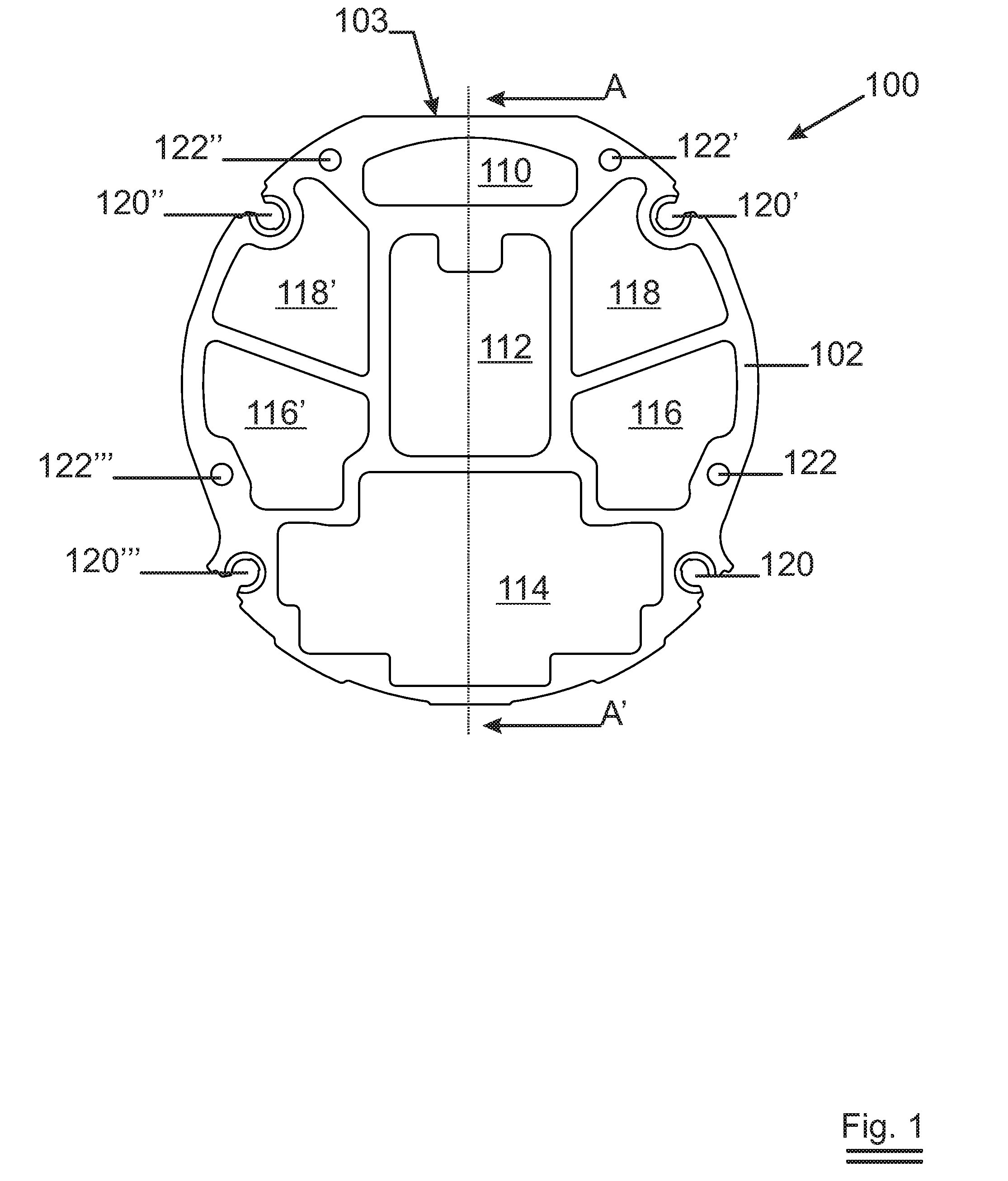Rotatable sputtering magnetron with high stiffness
a magnetron and high-strength technology, applied in the field of sputtering magnetrons, can solve the problems of non-uniform coating profiles across the substrate, cooling problems, and the magnet field generator must be contained in the target, and achieve the effect of less non-used materials and better cooling efficiency
- Summary
- Abstract
- Description
- Claims
- Application Information
AI Technical Summary
Benefits of technology
Problems solved by technology
Method used
Image
Examples
Embodiment Construction
[0061]FIG. 1 is a cross section of the tube 100 showing the extruded multi-walled tube of Duraluminium 102 which is in one single piece of material. In this particular embodiment the diameter of the tube is about 115 mm which fits into the interior of a 125 inner diameter target tube. Different compartments can be discerned that extend over the whole length of the magnetron tube: 114 will accommodate the magnet generator, 110 the adjustment mechanism for the supports. 112 will hold the support themselves. Compartments 118, 118′, 116, 116′ can be used for other purposes such as feeding and extraction of coolant, feed trough of tubing, cables or the like. The holes 122, 122′, 122″, 122′″ are threaded holes (not extending over the entire length of the tube, only at either end of the tube) for receiving screws to fix the closure pieces (not shown). The tube is to be mounted such that bending occurs in the plane AA′.
[0062]When calculating the stiffness of the tube compared to the prior-a...
PUM
| Property | Measurement | Unit |
|---|---|---|
| Thickness | aaaaa | aaaaa |
| Thickness | aaaaa | aaaaa |
| Volume | aaaaa | aaaaa |
Abstract
Description
Claims
Application Information
 Login to View More
Login to View More - R&D
- Intellectual Property
- Life Sciences
- Materials
- Tech Scout
- Unparalleled Data Quality
- Higher Quality Content
- 60% Fewer Hallucinations
Browse by: Latest US Patents, China's latest patents, Technical Efficacy Thesaurus, Application Domain, Technology Topic, Popular Technical Reports.
© 2025 PatSnap. All rights reserved.Legal|Privacy policy|Modern Slavery Act Transparency Statement|Sitemap|About US| Contact US: help@patsnap.com



